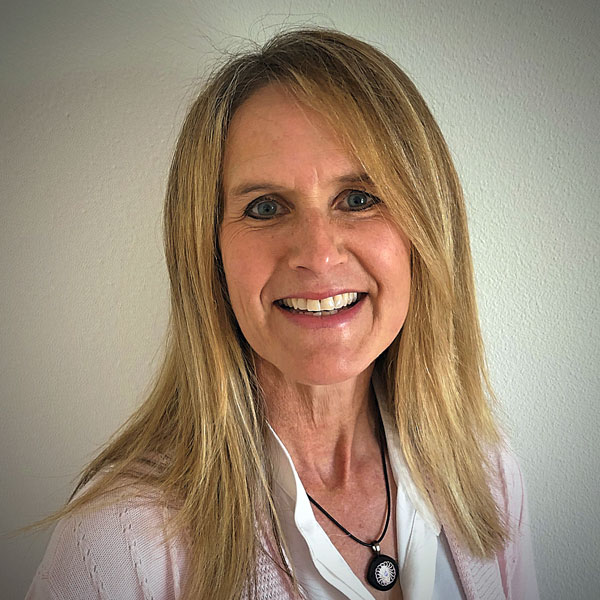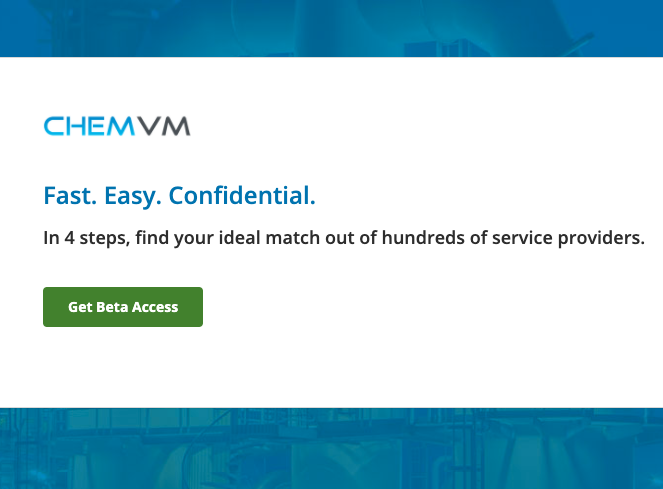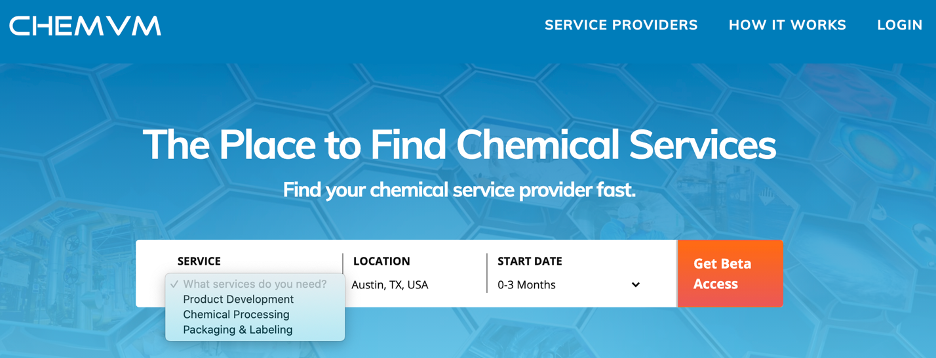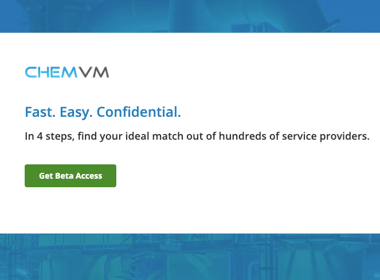ChemVM is Now Open: What do You Think?
 Rebecca Geier
Rebecca Geier
Excellence in software development requires a number of elements be in place including a proven and flexible structure and process, management’s engagement to provide strategic direction and candid input, and disciplined decision-making. It also takes patience to sweat the details and ensure the user experience is carefully thought through. In this post, I’ll give you a look inside our software development process that led us to an important milestone this week: our 2nd Beta and opening up the ChemVM application to the world. It starts with a development and design team that’s been around the software block a few times.
ChemVM Development Team
We’re fortunate to have a technical executive team led by our CTO Justin and our CIO Dave who bring decades of experience in software development as well as in chemical manufacturing, supply chain, regulatory compliance, environment, health and safety, and quality. Justin and Dave are partners in crime with our head of design, Joe, who’s led UX/UI and branding teams from NetSpend to National Instruments. Together, Dave, Justin and Joe have created every aspect of your ChemVM experience.

At the outset of developing the platform, Dave and Justin implemented an Agile development structure and process using DevOps on the Microsoft Azure platform, a leading software development technology tool used by companies such as Boeing, Shell and EY. All development planning, development, delivery and operation are done in DevOps. In parallel, Joe designs all page screens, from the smallest icons to the overall layout, in a powerful tool called Figma. Once the screens are approved, they are programmatically implemented and published. Of paramount concern through development has been assuring customer data is kept private and secure.
Step 1: Internal Alpha Testing
Our software development has followed a methodical release process, starting with executive level agreement on feature prioritization. For example, in the early days of development, we debated whether to build out the chemical reactions section of the platform first or start with blending processes. With the chemical engineers on the team sharing a strong voice, we started out with an in-depth project data capture experience for a process engineer user audience who would want to sequence out their chemical process steps with detailed input and output streams. We have since updated the platform to be more streamlined and accessible for a wider audience, including supply chain leaders or product entrepreneurs who don’t need or want to enter such in-depth and technical information.
Our agile process is defined according to 2-week sprints that each include detailed stories with tasks that range from UI improvements to building out entire new project data sections such as warehousing or labeling options. Once a 2-week sprint is complete, a new release of the platform is internally published and ready for team testing, a phase we call “Alpha”. During Alpha testing, we each enter into the platform a handful of chemical projects that are based on our team’s real-world experiences. A great deal of variety is built into the projects to ensure a thorough testing of the platform’s features, including processing services including a robust offering of chemical reactions from aceto-acylation to Wolf-Kishner reduction as well as blending, packaging, labeling, warehousing and delivery specifications. Another way to ensure thorough testing is by having technical and non-technical uses on the ChemVM team participate in Alpha testing. This ensures the primary user audiences we expect to use the tool – procurement and supply chain managers, process engineers and product entrepreneurs – are represented during testing so we identify with how they think about their needs and offer a path that’s best-suited for each.
As we each go through our project entry process, each team member enters “bugs” in DevOps explaining the issue and attaching supporting screen shots of where they encountered the issue. All team feedback is gathered and organized into categories, from errors encountered to confusing wording, places where the app was hard to use (e.g., too many clicks to get to important information, or disjointed flow. We then meet as a team for hours to meticulously discuss each issue and agree on how to resolve. This may include updates to wording, design, flow, or asking more or different questions. Our ultimate goal is to put ourselves in your shoes and make it as easy AND robust, quick AND secure, and full-featured AND accessible to all. But the real test is when we have real users test the site. We do this through controlled Beta phases.

Step 2: External Beta Testing with Customers
During our first Beta a few months ago, we invited about a dozen customers and service providers to enter their project data – either from current or previous chemical projects they’ve worked on. With the users’ permission, Joe used a tool called Lookback to virtually “watch” their experience. When users got stuck, Joe would ask them questions to better understand what was confusing but did not assist or guide them. We documented key findings that informed the next round of our sprints and internal alpha testing. After more than 20 rounds of internal alpha testing, we have officially launched Beta 2. While we will schedule a dozen or so sessions with select users in the Lookback tool to “watch” their experience and ask questions as they go through, the ChemVM platform is now open for anyone to use.
To begin using the app, simply go to the home page of ChemVM.com and start your project by picking your “services path” that best matches your project needs, as shown in this screenshot:
Once you click on Get Beta Access, you can register for the beta and begin entering your chemical project data. Once complete, simply submit your project for review and the ChemVM team will get to work selecting the ideal service providers matched to your specific chemical project needs.
ChemVM Is Now Open – What Do You Think?
We look forward to hearing about your experience. We invite you to share your feedback by completing a 1-minute survey at the end of your session and participating in a 15-minute phone call to share your experience. Through Beta 2 and candid user feedback, we hope to better understand if the platform provides you with:
- An easy and valuable path for different project and user types
- An easy user experience where you can easily find what you need
- A logical user experience with question sequencing that makes sense and seems natural
- A robust and intuitive project information capture process that matches what you want to tell us
- An opportunity for you to share as much detail that you want about your project while keeping the process as simple and quick as possible
Trying to anticipate what users want and need in defining their chemical services projects and finding the ideal service providers is a tricky process. Real customer feedback is invaluable. So go ahead – give it a whirl and let us know what you think.



